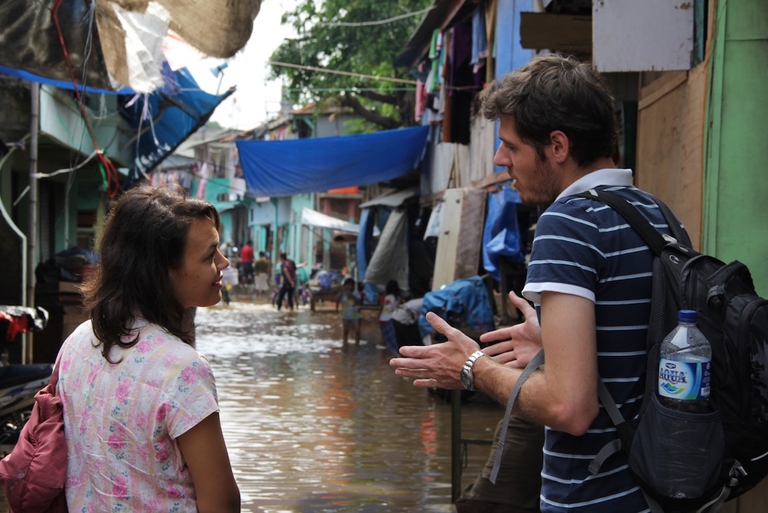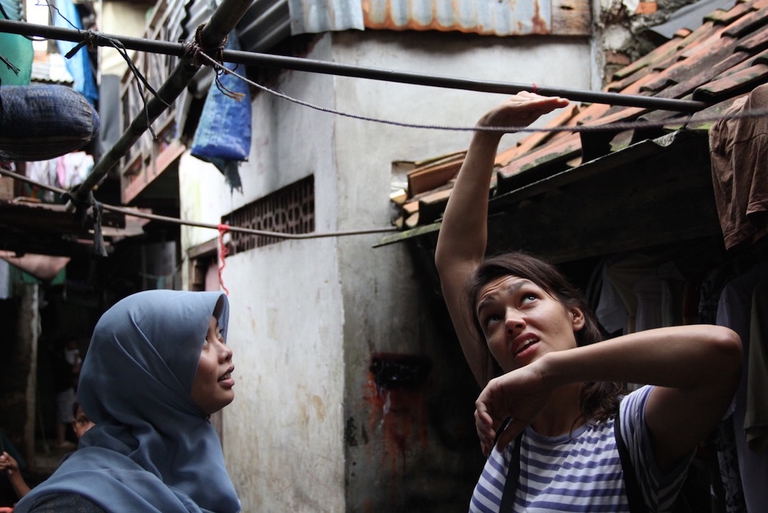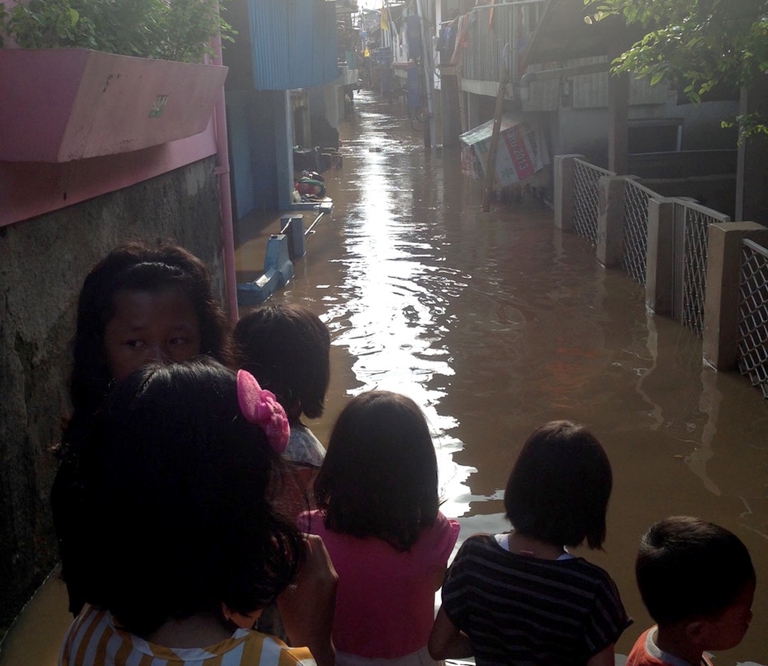
South African court dismisses a major lawsuit by 140,000 Zambian women and children against Anglo American for Kabwe lead poisoning. A setback for affected communities enduring the lasting impact of lead contamination.
Etienne Turpin is a philosopher specialised in complex urban systems, aesthetics and visual culture. He believes that the only meaningful way to approach the problem of “urban flooding in the context of climate change is honest, open science with open source software and open data that can be reviewed by a community of users”.
Etienne Turpin is a philosopher specialised in complex urban systems, aesthetics and visual culture. He believes that the only meaningful way to approach the problem of “urban flooding in the context of climate change is honest, open science with open source software and open data that can be reviewed by a community of users”.
“It is well known that the old engineering approach to flooding just doesn’t work in megacities like Jakarta, and the heroic, consultant-based solutions are basically just ways for European firms to steal more money from the people of Indonesia,” Turpin says. “If we could admit that this old approach is a dramatic failure, we could then move on to ask: what can urban residents do together to reduce the dangers of extreme weather events and increase their enjoyment of the urban environment?”
He and Doctor Tomas Holderness came up with the idea of PetaJakarta.org, which uses the open source software CogniCity to “listen” to Twitter for keywords about flooding during the monsoon season in Jakarta. When words like “banjir” (flood) are heard, an invitation is sent to the original user asking them to specify if there is a flood in their location.
Potential flood reporters give details and spread pictures by sharing tweets with the hashtag #banjir with @petajkt. These are then displayed on a free public map visible at PetaJakarta.org, giving real time flood information and reports.
Jakarta has one of the highest concentrations of Twitter users in the world. Tens of thousands of Jakartans used PetaJakarta.org during major floods in 2014 and 2015.
“In the context of a disaster, people tend to turn to what they know, so if you’re using Twitter to get information in general, in a disaster you’ll use it even more frequently,” says Turpin.
We believe municipal governments and emergency agencies need to re-imagine the role of social media as a way of integrating the concerns and reports of residents in a more comprehensive, coordinated way.
The project is the result of a collaboration between the SMART Infrastructure Facility at the University of Wollongong (where both Turpin and Holderness are research fellows) in Australia, the Jakarta Emergency Management Agency, and Twitter, amongst others.
Dealing with flooding, which threatens cities around the world, requires adaptive thinking. In Turpin’s words, “the future of cities will be open source, or it won’t be much of a future at all”. PetaJakarta.org helps the city’s emergency management agency improve response and reduce costs by aggregating real time information whilst giving residents more influence on the process of disaster management.
Siamo anche su WhatsApp. Segui il canale ufficiale LifeGate per restare aggiornata, aggiornato sulle ultime notizie e sulle nostre attività.
![]()
Quest'opera è distribuita con Licenza Creative Commons Attribuzione - Non commerciale - Non opere derivate 4.0 Internazionale.
South African court dismisses a major lawsuit by 140,000 Zambian women and children against Anglo American for Kabwe lead poisoning. A setback for affected communities enduring the lasting impact of lead contamination.
Controversial African land deals by Blue Carbon face skepticism regarding their environmental impact and doubts about the company’s track record, raising concerns about potential divergence from authentic environmental initiatives.
Majuli, the world’s largest river island in Assam State of India is quickly disappearing into the Brahmaputra river due to soil erosion.
Food imported into the EU aren’t subject to the same production standards as European food. The introduction of mirror clauses would ensure reciprocity while also encouraging the agroecological transition.
Sikkim is a hilly State in north-east India. Surrounded by villages that attracts outsiders thanks to its soothing calmness and natural beauty.
Sikkim, one of the smallest states in India has made it mandatory for new mothers to plant saplings and protect them like their children to save environment
Chilekwa Mumba is a Zambian is an environmental activist and community organizer. He is known for having organized a successful lawsuit against UK-based mining companies.
What led to the Fukushima water release, and what are the impacts of one of the most controversial decisions of the post-nuclear disaster clean-up effort?
Nzambi Matee is a Kenyan engineer who produces sustainable low-cost construction materials made of recycled plastic waste with the aim of addressing plastic pollution and affordable housing.










